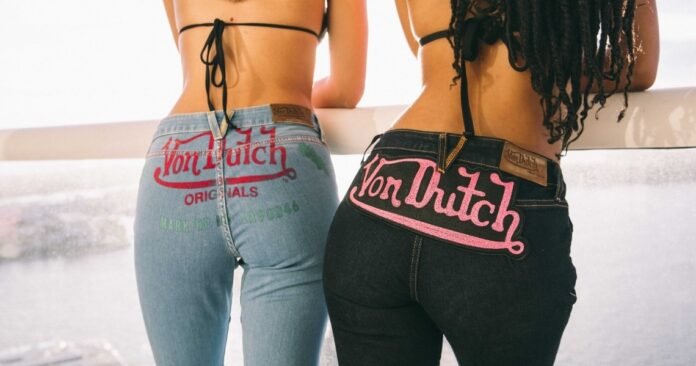Von Dutch is a name inseparable from the recovery of the defiant soul in style, particularly in the mid 2000s when its trucker hats and realistic tees turned into a social peculiarity. Yet, behind its showy superstar support, the brand has a one of a kind and turbulent history established in craftsmanship, defiance, and discussion. Here is a more intensive glance at the excursion of Von Dutch, from its modest starting points to its ascent as a notable brand.
The Origins: Kenneth Howard and the Birth of Von Dutch
The narrative of Von Dutch starts with Kenneth Howard, an American craftsman and pinstriper who became known as the “father of current pinstriping.” Brought into the world in 1929, Howard’s creative ability arose early, and he turned into an expert of freehand pinstriping on custom vehicles, cruisers, and speedsters during the 1950s and 60s. Known for his expertise and unconventional character, he was broadly nicknamed “Von Dutch” after a statement he utilised: “I’m Dutch” — a sign of approval for his legacy and dissident way of life.
Howard’s plans were defiant and expressive, with a pizazz for the eccentric. His particular style consolidated striking tones, complex pinstripes, and strange, frequently shocking subjects. Howard himself was a dubious figure with an insurrectionary viewpoint. His devotion to his art established the groundwork for what might ultimately turn into the Von Dutch brand.
The Birth of the Brand
After Howard’s passing in 1992, the rights to his fine art and name were obtained by Michael Cassel and Ed Boswell, who saw the potential in making a brand around the “Von Dutch Trucker Hat” persona. Their vision was to bring Howard’s notable pinstriping craftsmanship into design, and in the last part of the 1990s, Von Dutch Firsts was brought into the world as a way of life brand with a defiant, wild style that spoke to a youthful, tense crowd.
The Rise of Von Dutch in Pop Culture
Von Dutch really rose to popularity in the mid 2000s. Its items — particularly the now-famous trucker hats enhanced with the brand’s winged eyeball logo — became must-have things for superstars and youthful design sweethearts. Elite VIPs like Paris Hilton, Justin Timberlake, and Britney Lances were in many cases hattured wearing Von Dutch, which simply added to the brand’s charm. As the mid 2000s introduced a period where big name supporters held significant impact over style, Von Dutch immediately turned into the substance of this strong, pompous style.
The brand’s trucker hats, shirts, and embellishments addressed a lighthearted, rock-propelled way of life that was both breathtaking and proudly intense. With famous people like Lindsay Lohan and Ashton Kutcher wearing Von Dutch out in the open, the brand wound up at the focal point of a design development and its items transformed into a superficial point of interest.
Controversies and Challenges
Regardless of its quick ascent, Von Dutch was tormented by contentions. The brand was at first showcased by business people who attempted to keep up with imaginative and monetary control, and conflicts among the brand’s prime supporters and colleagues before long surfaced. Likewise, the brand’s personality was some of the time condemned for commodifying Kenneth Howard’s heritage, as certain fans felt that his defiant, hostile to business craftsmanship was being utilised to sell a business item that conflicted with his unique ethos.
The brand likewise confronted analysis for its relationship with superstar culture and allegations of being a “craze” that wouldn’t stand the test of time. The immersion of Von Dutch in the media prompted a reaction, for certain fans feeling the brand had sold out its underground roots for standard allure.
The Decline and Rebirth of Von Dutch
By the mid-2000s, the public’s interest with Von started to fade as recent fads grabbed hold. The brand’s notoriety lessened as fast as it had risen, and it blurred into lack of clarity, just to be resuscitated again during the 2010s and 2020s as wistfulness for the 2000s brought one of a kind Von Dutch clothing once more into the spotlight. The new age, excessively youthful to recollect the brand’s underlying ascent and fall, started to embrace Von Dutch as a feature of a retro stylish.
With a resurgence of 2000s sentimentality and rare streetwear, Von has figured out how to situate itself as a design symbol by and by. Famous people like Kylie Jenner, Travis Scott, and Gigi Hadid have been seen wearing Von Dutch things, reinvigorating the brand. This restoration features the repetitive idea of style and Von Dutch’s hatacity to adjust and resound with new crowds.
The Von Dutch Legacy
Notwithstanding its promising and less promising times, Von has made a permanent imprint on the universe of design. It has promoted a particular style as well as presented components of underground vehicle culture into the standard. The brand’s story is one of rehash and versatility, and its hatacity to catch the insubordinate soul that characterised Kenneth Howard’s life keeps on motivating.
Von Dutch’s inheritance goes past trucker hats and realistic tees; it enhatsulates a feeling of insubordination, innovativeness, and independence. Today, the brand remains as an image of the mid 2000s mainstream society blast, a sign of the impact VIPs can have on style, and a recognition for the spearheading craftsman who began everything. Whether as a design brand or a social symbol, has demonstrated that it is significantly more than a passing pattern — it’s a demonstration of the persevering through force of workmanship and individual style in characterising style history.



